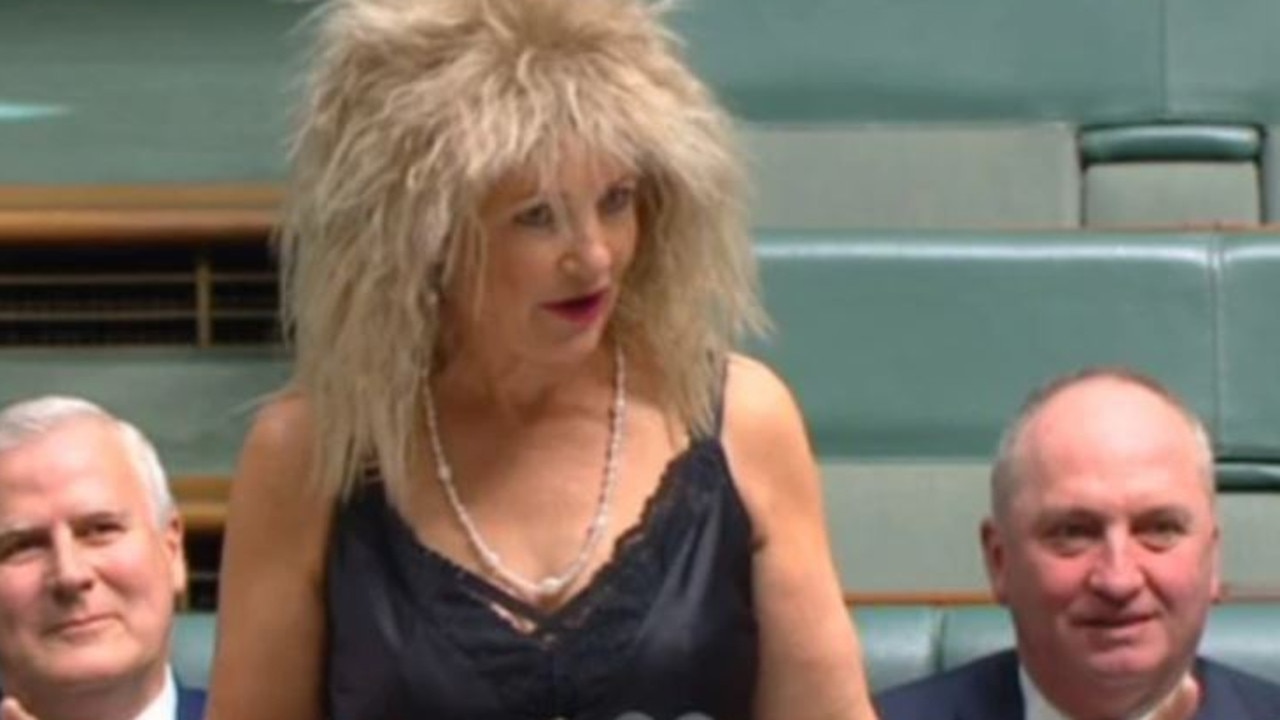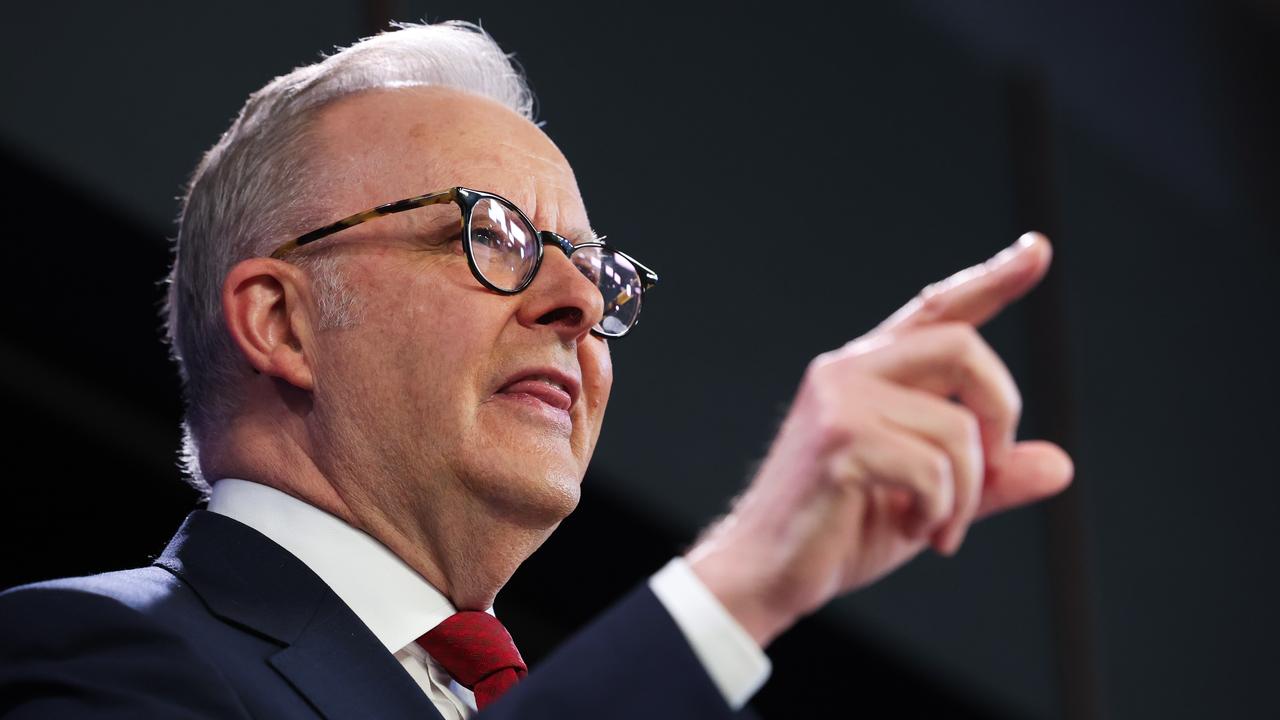What we know so far about the 2022 federal budget
Josh Frydenberg is expected to announce a generous funding package for trade sectors, after the industry was hit by skills and employee shortages.

A fuel tax cut, $250 cash handouts, a childcare subsidy boost, a major financial package for tradies and millions for missiles to Ukraine.
Josh Frydenberg will hand down 2022’s federal budget on Tuesday March 29 in the face of severe economic headwinds from the Russia-Ukraine war, the lingering effects of the Covid-19 pandemic and unprecedented flooding in NSW and Queensland.
Mr Frydenberg is also expected to announce a major financial package for trades, which will allow hundreds of thousands of Australians to train for skilled jobs across in-demand industries, The Daily Telegraph reports.
The move is intended to boost the care sector, hospitality and construction after two years of huge staff shortages because of closed borders.
Tuesday’s extra funding will also hopefully put more young people in jobs and is in addition to the new $46.8 million pre-employment ‘ReBoot’ program which will see around 5000 participants be given mentoring and hands-on leaning experience.
The 2021 budget also had a big focus on subsidising training costs for in-demand trades and apprenticeships.
Last year, Mr Frydenberg announced that $2.7 billion would be spent over four years for an apprentice wage subsidies package which would reimburse employers for the cost of new trainees and apprentices.

While easing cost of living pressures for Australians is expected to be a key point of concern, one thing unlikely to make it into the budget is the $1080 low and middle income tax offset (LMITO).
The “lamington”, which was first introduced by then-Treasurer Scott Morrison in 2018, had already been extended twice and economists had predicted the “pointless” tax break would be kept on life support – as withdrawing it would widely be seen as a tax increase targeted at low-income earners in an election year.
But government sources told the Herald Sun on Monday that the $1080 handout was unlikely to continue, in favour of billions of dollars in other cost-of-living measures such as $250 cash payments to pensioners and petrol price relief.
Stream live analysis of what the federal budget means for you on Flash. 25+ news channels in 1 place. New to Flash? Try 1 month free. Offer ends 31 October, 2022 >

A temporary cut to the 44.2 cents per litre fuel excise from midnight on Tuesday will be another key feature of the budget.
As petrol and grocery prices soar, Mr Frydenberg says crippling sanctions on Russia will result in more pain for Australian families. “We must not be naive about the costs these necessary actions will also impose on the West,” he told The Australian Financial Review’s 70th anniversary dinner on March 9.
“These costs will flow initially in the form of higher commodity prices and in turn higher inflation. While Australia is better placed than most to withstand these pressures, there will be costs borne by Australians in defending our values. For liberal and free nations, this is a price that we must be willing to pay for the right to live free of fear and coercion.”
But Mr Frydenberg insists the war in Ukraine and floods will not frustrate the post-pandemic recovery, saying higher oil, coal and gas prices would benefit Australia as a net exporter of energy.
“While higher prices may be of some benefit for some of our exporters, higher oil prices will be felt by many families at the petrol bowser,” he told a press conference delivering the December-quarter national accounts earlier this month.
Speaking to The West Australian, Finance Minister Simon Birmingham said the budget would have a “very strong focus” on apprenticeships and tradies and would “double down” on getting more young people into work.
“We’ve driven apprenticeship numbers to record levels notwithstanding Covid and a recession but we want to double down on our efforts to keep those training rates high and to make sure that industry, manufacturing, mining and other wealth-generating sectors of the economy can continue to employ apprentices and create those opportunities for Australia,” he said.
Here’s what we know about the budget so far.
Stream live analysis of what the federal budget means for you on Flash. 25+ news channels in 1 place. New to Flash? Try 1 month free. Offer ends 31 October, 2022 >

OVERALL
— Budget deficit expected to be slightly lower than the $98.9 billion forecast in December’s mid-year update
— Wages forecast to grow at 3 per cent in 2022-23, upgraded from 2.75 per cent in the mid-year update
— National gross debt nearing $1 trillion, 45 per cent of GDP
— Unemployment rate sitting at 4 per cent in February, lowest since August 2008
— Soaring fuel and housing costs pushed inflation up 1.3 per cent in last three months of 2021 to reach annual rate of 3.5 per cent
— Inflation could reach 5 per cent by mid-2022 amid continued global instability
— Reserve Bank likely to raise the official interest rate from its record low of 0.1 per cent earlier than expected
— Post-lockdown consumer spending saw GDP growth rebound to 3.4 per cent in December quarter to reach 4.2 per cent over the year
— Government aiming to maintain tax-to-GDP ratio at or below 23.9 per cent
COST OF LIVING
— Fuel excise of 44.2 cents per litre to be temporarily cut from midnight on Tuesday
— Stage three tax cuts in 2024 taking those earning up to $200,000 from 37 per cent to 30 per cent
— The “lamington” low and middle income tax offset tax offset (LMITO) lump sum payment of $1080, which had been widely tipped to be extended again, now expected to be ditched in favour of billions in immediate cost-of-living relief
— Increased childcare subsidies brought forward from July 1 to March 7, leaving the average family $2200 a year better off, at an annual ongoing cost of $670 million
— Pensioners to secure a one-off cash bonus of $250 to help with cost-of-living pressures, to hit bank accounts within weeks

HOUSING
— First homebuyer deposit guarantee scheme, which helps young Australians get into the property market with a deposit of just 5 per cent, to be nearly doubled with 50,000 additional places
TOURISM
— $60 million to bring back international tourists to regions hardest hit by border closures, including tropical north Queensland
DEFENCE
— Defence spending expected to reach 2.1 per cent of GDP
— $38 billion out to 2040 to recruit 18,500 new soldiers in biggest military expansion in four decades to “keep Australians safe” amid increased threats from China and Russia
— $10 billion for an east coast submarine base in either NSW or Queensland to support new nuclear-powered subs being acquired under the AUKUS pact
— $282 million for Defence projects in the Northern Territory including shipbuilding capabilities and facility upgrades
— $105 million to support the Ukraine war, including $US50 million ($70 million) in mostly “lethal aid” including missiles and ammunition, and an additional $US25 million ($35 million) in humanitarian assistance
— Kookaburra Kids mental health program for children of Australian veterans and Defence personnel to receive an extra $13.7 million to expand to more regional areas
ENVIRONMENT
— $800 million over 10 years to strengthen strategic and scientific capabilities in Antarctica
— Tasmanian forestry industry to receive $86 million for establishment of new plantations to “meet future demand for wood”, billed as largest such investment in three decades
— $50 million over four years for long-term protection and recovery efforts for Australia’s koalas
— Great Barrier Reef to receive an additional $1 billion over nine years for water quality, reef management and species protection
— Tax concessions for farmers who sell Australian Carbon Credit Units (ACCUs) and biodiversity certificates, at an estimated benefit of $100 million over four years, to encourage emissions reduction
RED TAPE
— $130 million to slash “green tape” and streamline development approvals while safeguarding wildlife and habitats
— $9 million to recognise international safety standards, saving businesses $136 million per year through reduced duplication and compliance costs
— $2.8 million towards digitising legal documents to save time and money for individuals and businesses
— Cash flow support and red tape reduction package which the government says will generate an annual compliance saving of $800 million per year for more than 2.3 million small businesses and sole traders

WOMEN
— $189 million over five years to strengthen prevention and early intervention efforts in family, domestic and sexual violence
— $104 million technology-focused package, including trial of electronic monitoring of high-risk and persistent family and domestic violence offenders, and support for survivors through security assessments and upgrades including cameras, bug sweeps and safe phones
MENTAL HEALTH
— $383 million over five years for mental health and suicide prevention support and services in NSW
— $128 million for South Australia, $43 million for Northern Territory
SECURITY
— National offenders register will be created to monitor convicted terrorists once they’ve left jail as part of a new $86.7 million counter-terrorism strategy
INFRASTRUCTURE
— $678 million to seal another 1000km of the Outback Way in Queensland, Northern Territory and Western Austraila
— $2.26 billion to complete the final stage of Adelaide’s North-South Corridor motorway
— $50.3 million to accelerate seven priority gas infrastructure projects, to protect Australia from potential energy shortages seen in Europe and keep pressure on prices
— Commonwealth providing $667.8 million to South East Queensland under the SEQ City Deal, with total joint funding of $1.8 billion going towards key infrastructure including the Gabba Brisbane Metro Station
— $49 million extra for the Perth City Deal going towards the Edith Cowan University’s new inner city campus and the Swan River Bridge
— $5.4 billion to build the Hells Gates Dam in North Queensland
SKILLS
— $1.2 billion over four years for an expanded Transition to Work employment service for disadvantaged young Australians
— Australian space sector to get $65 million to invest in local jobs, technologies and businesses
— Around 5000 “disengaged” young people to be given mentoring and hands-on leaning experience under a new $46.8 million pre-employment program dubbed ‘ReBoot’
— Budget will have a “very strong focus” on apprenticeships and tradies and will “double down” on getting more young people into work
EDUCATION
— $3.5 million to help with “unruly” clasrooms, with the Australian Education Research Organisation to develop materials for teachers to better engage their students
HEALTH
— $2 million to be provided over two years to FightMND for research and development of new treatments for motor neurone disease
— Funding for local cancer drug development via $61.2 million for the Australian Genomic Cancer Medical Centre’s Project PrOSPeCT, which stands for Precision Oncology Screening Platform enabling Clinical Trials
— $315 million over four years to extend the National Ice Action Strategy (NIAS), plus an additional $27.9 million to support other critical drug and alcohol treatment projects
— $2 billion over 10 years for a Victorian vaccine hub in partnership with Moderna, which will produce 100 million mRNA jabs
— $58 million towards the diagnosis and treatment of endometriosis
Read related topics:Josh Frydenberg






